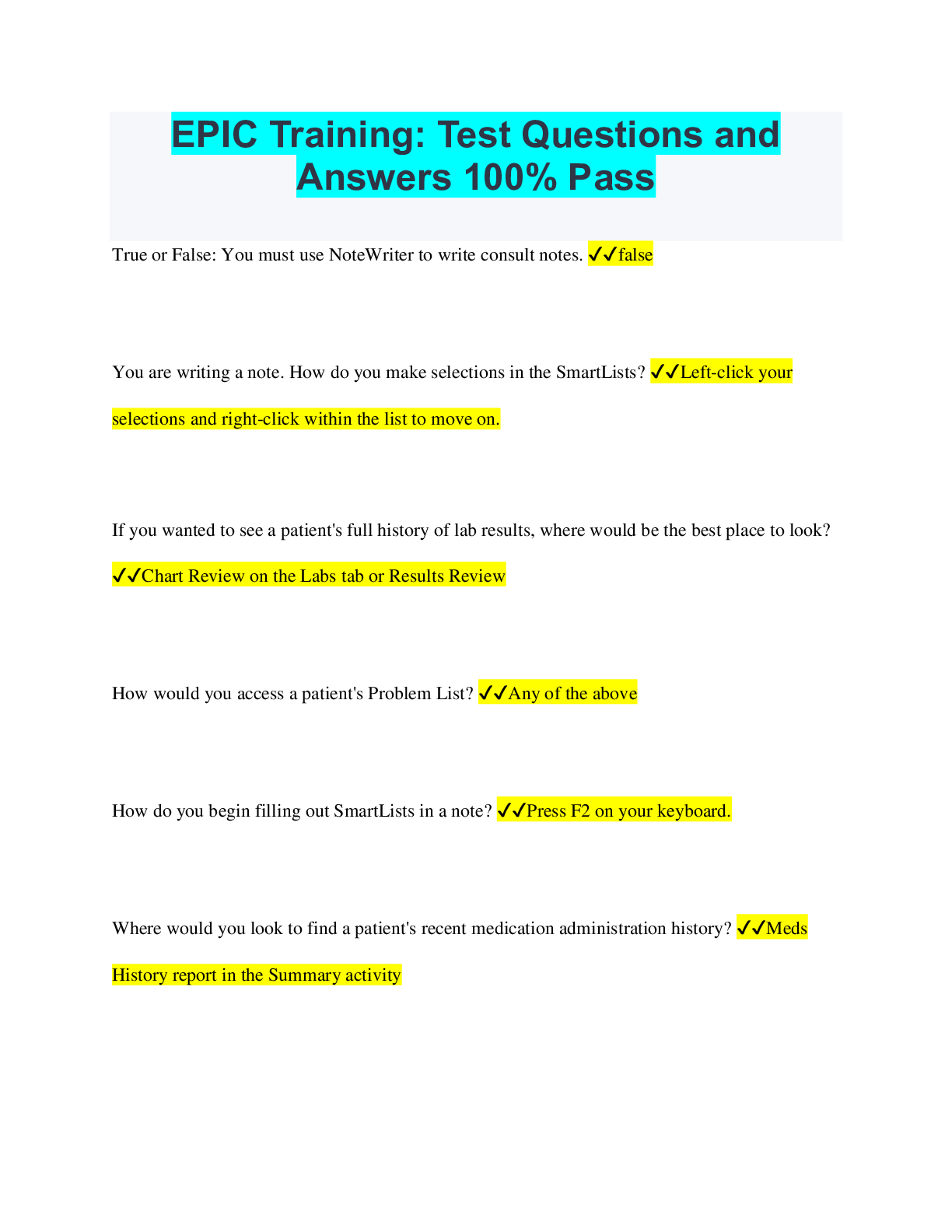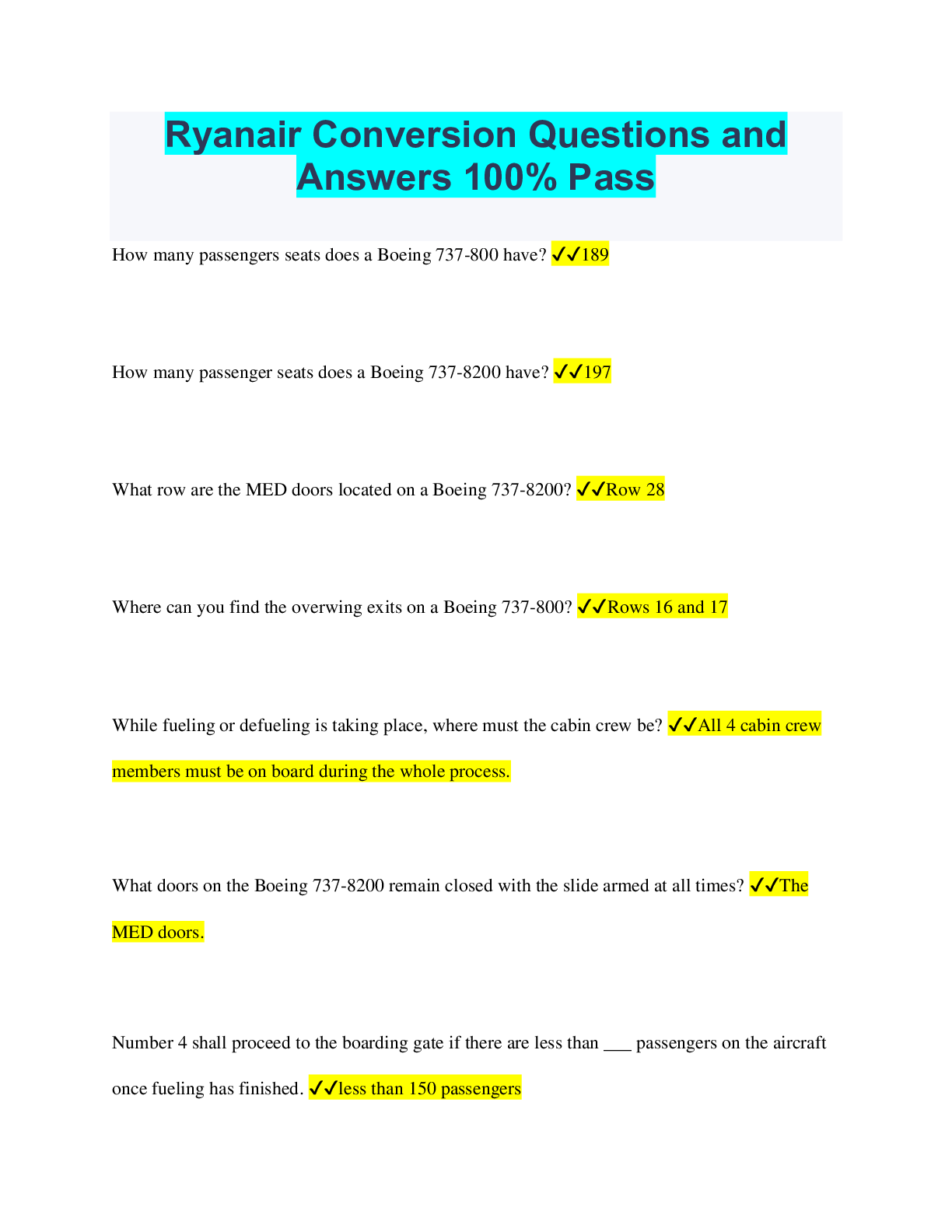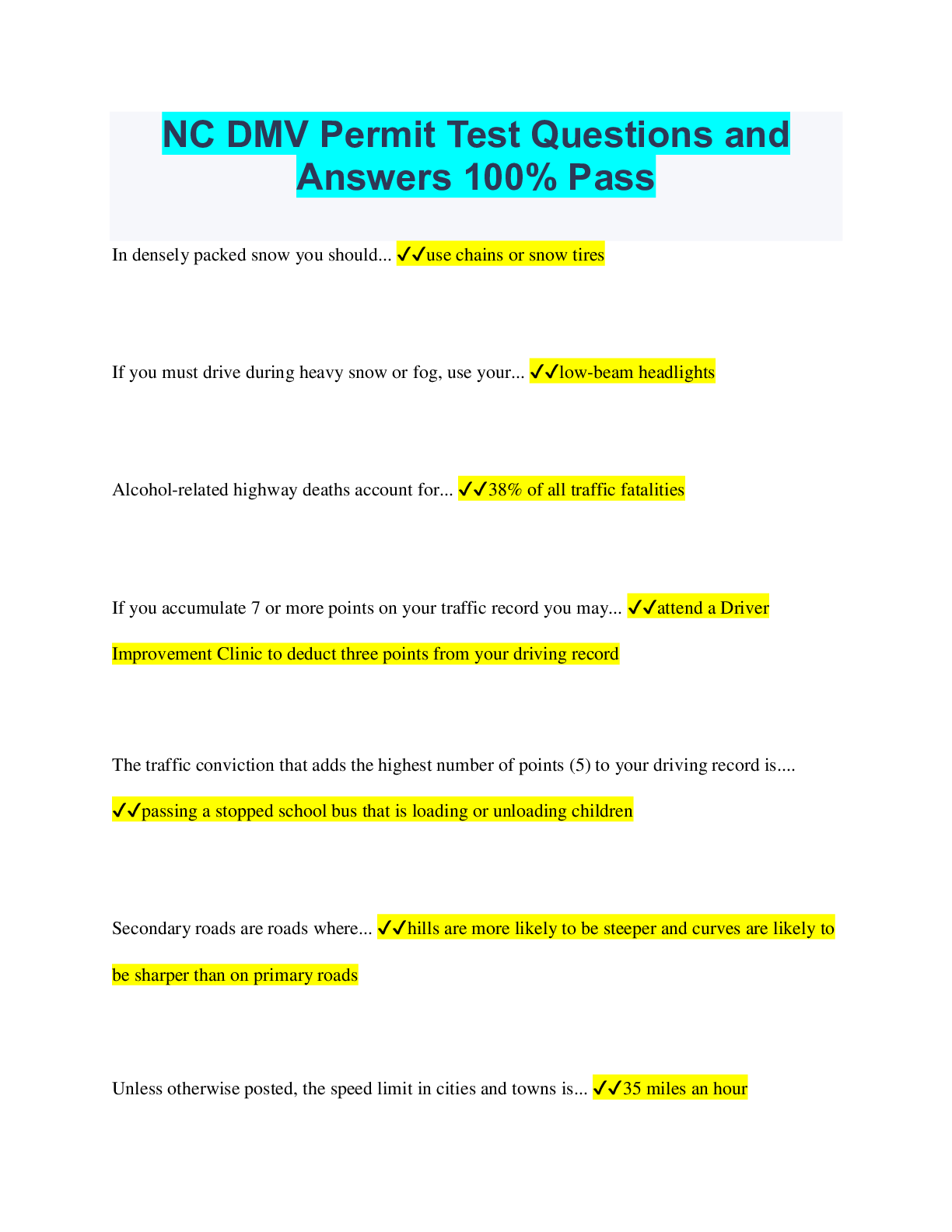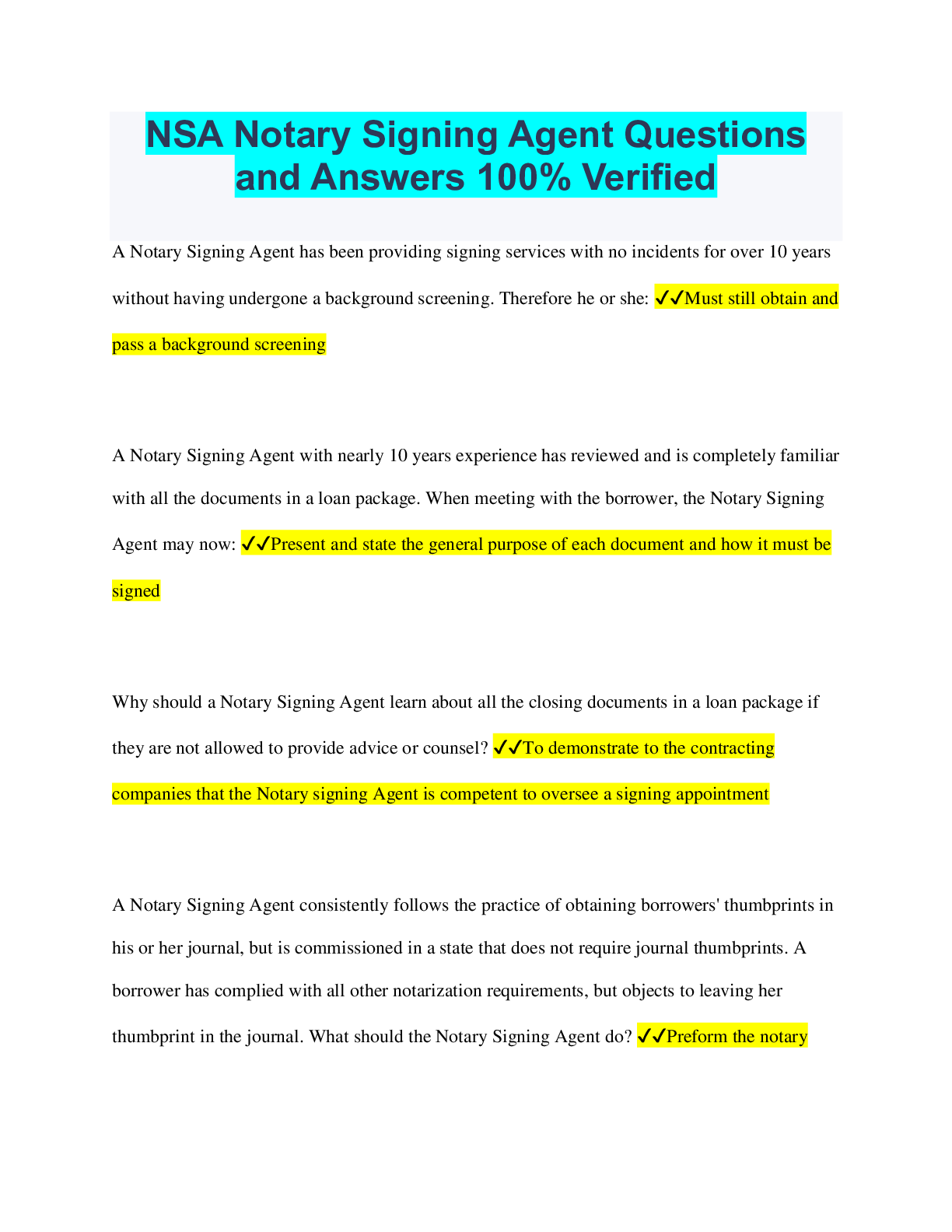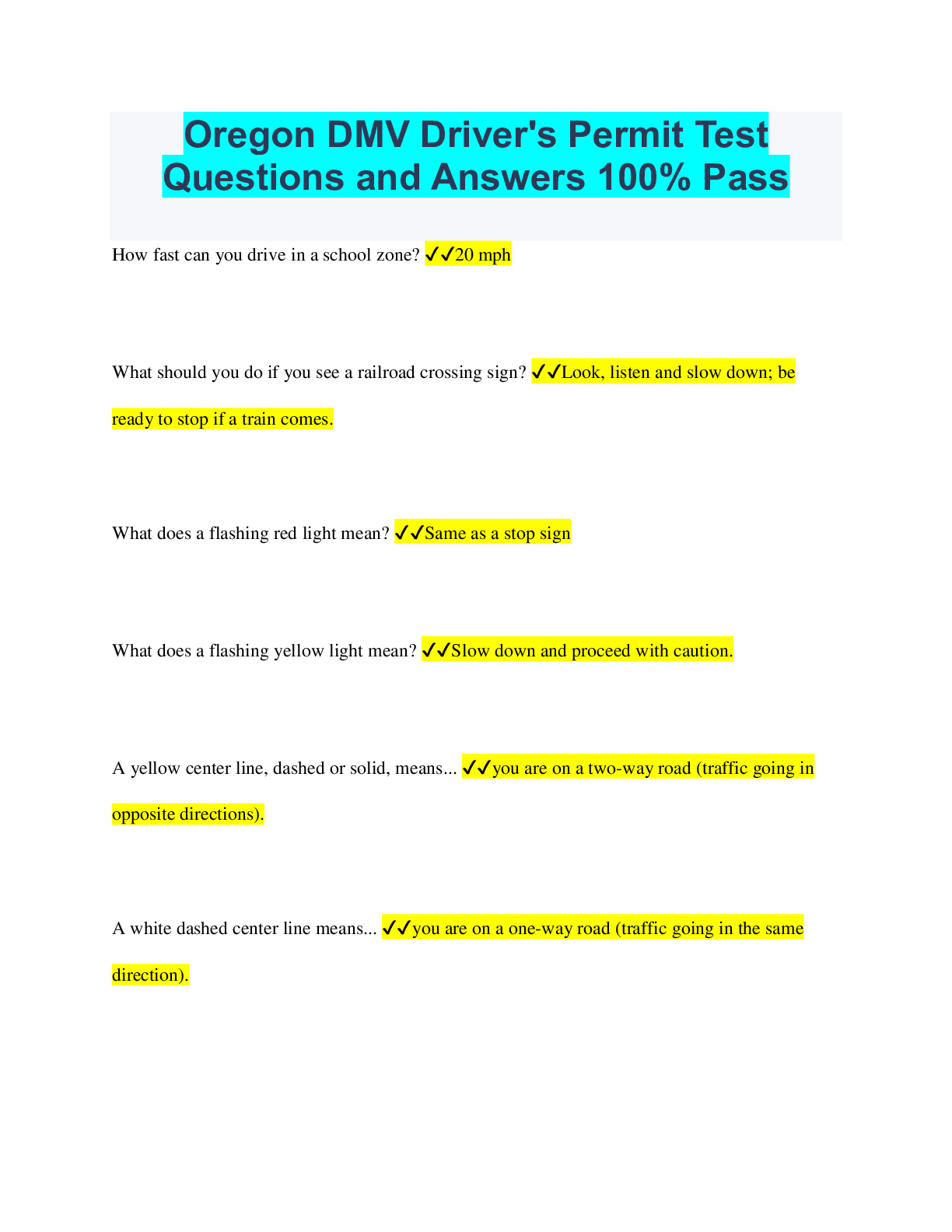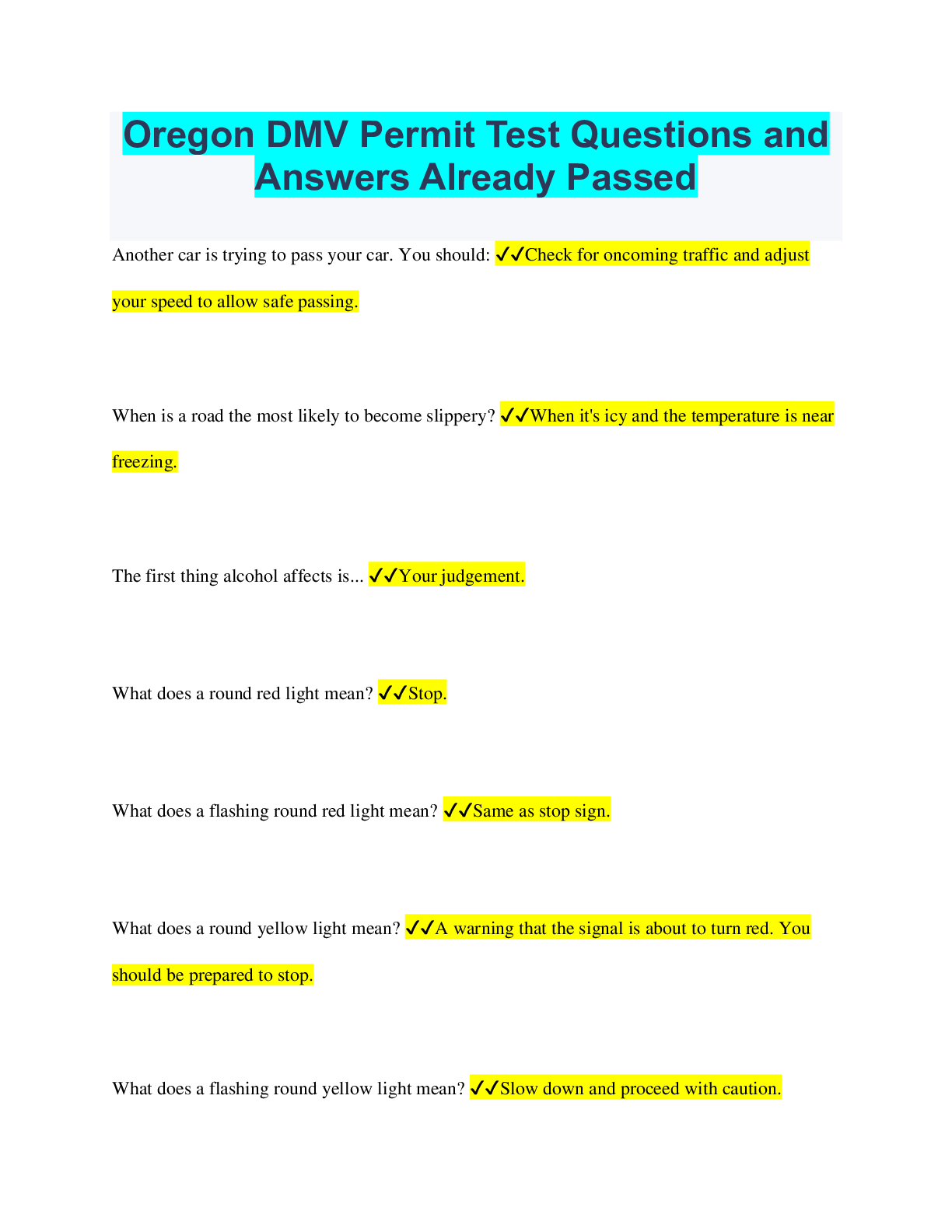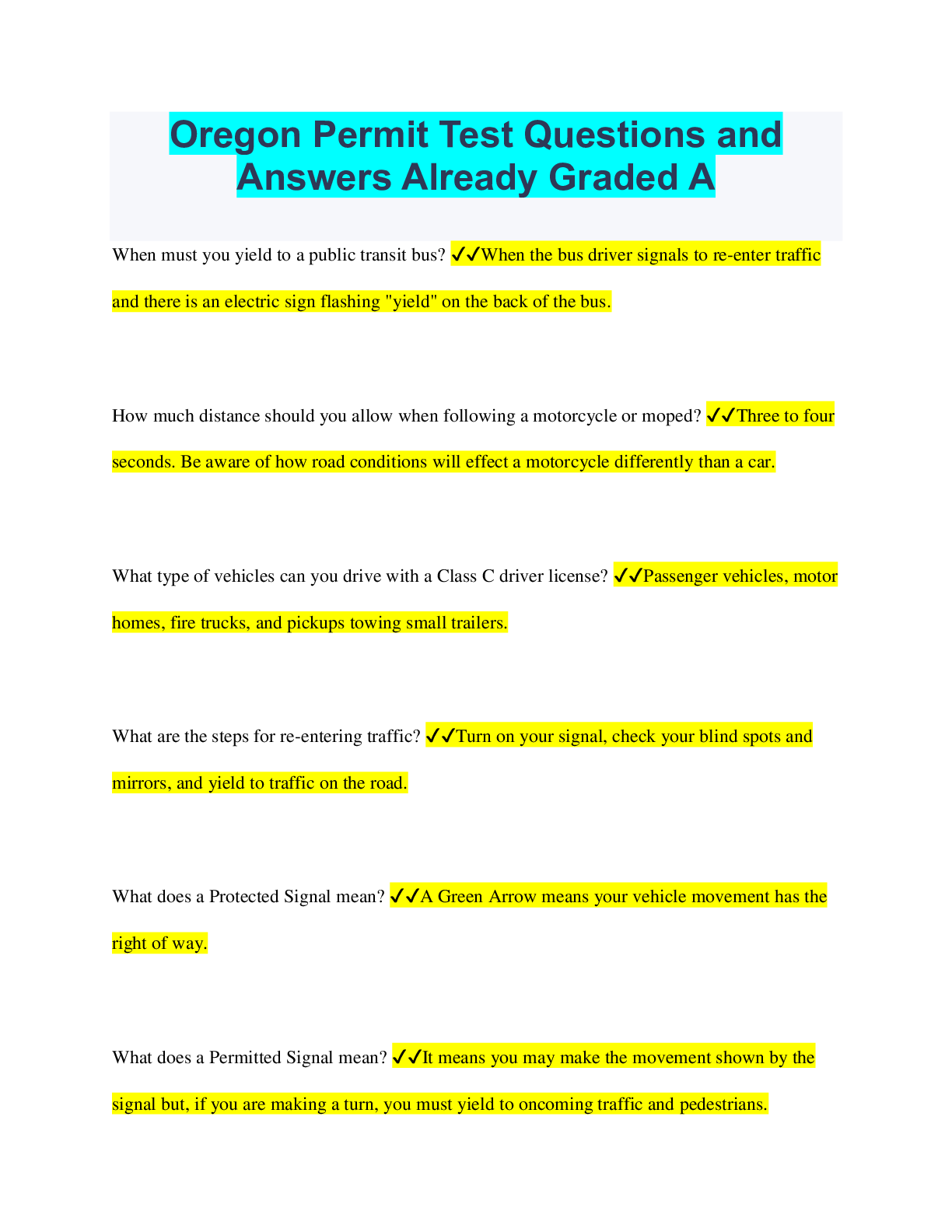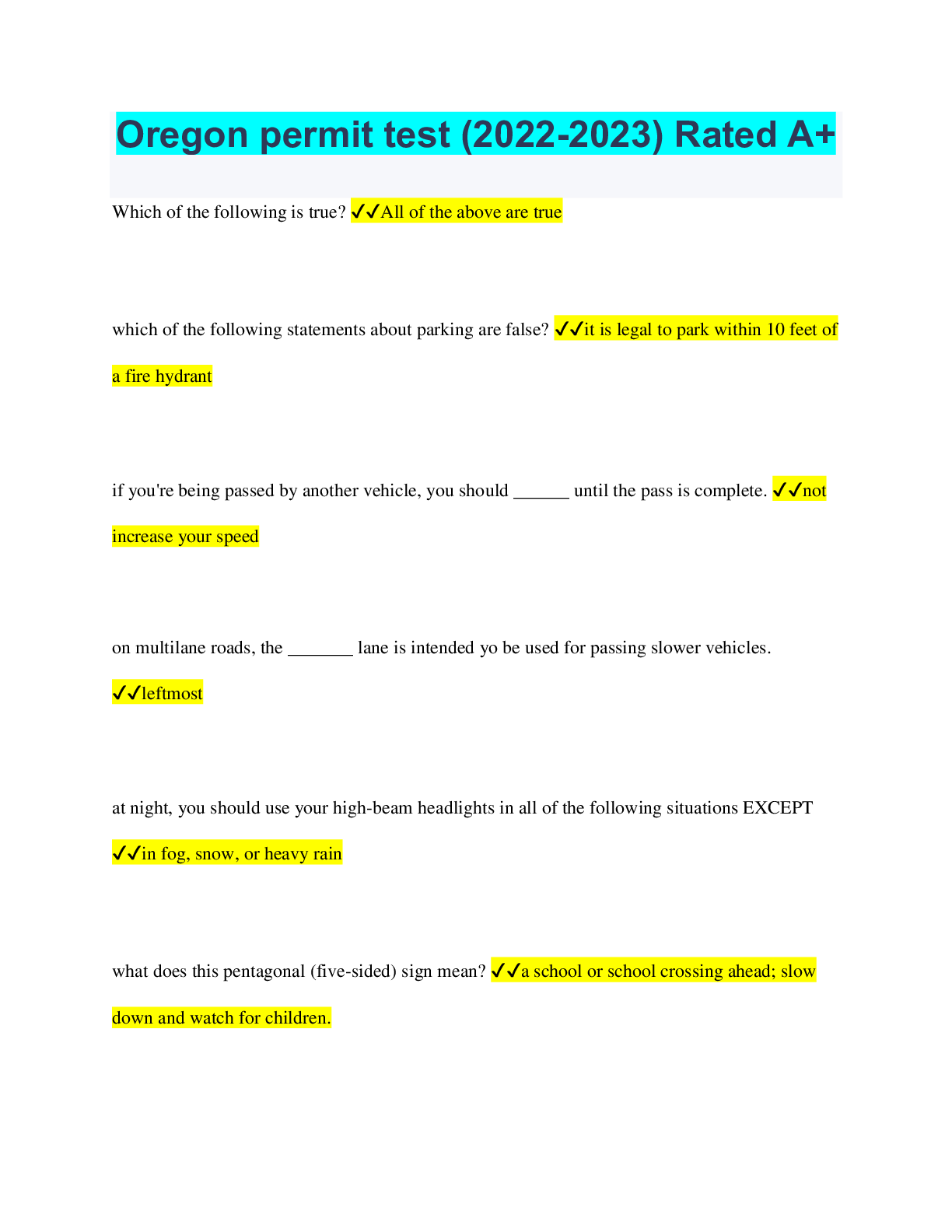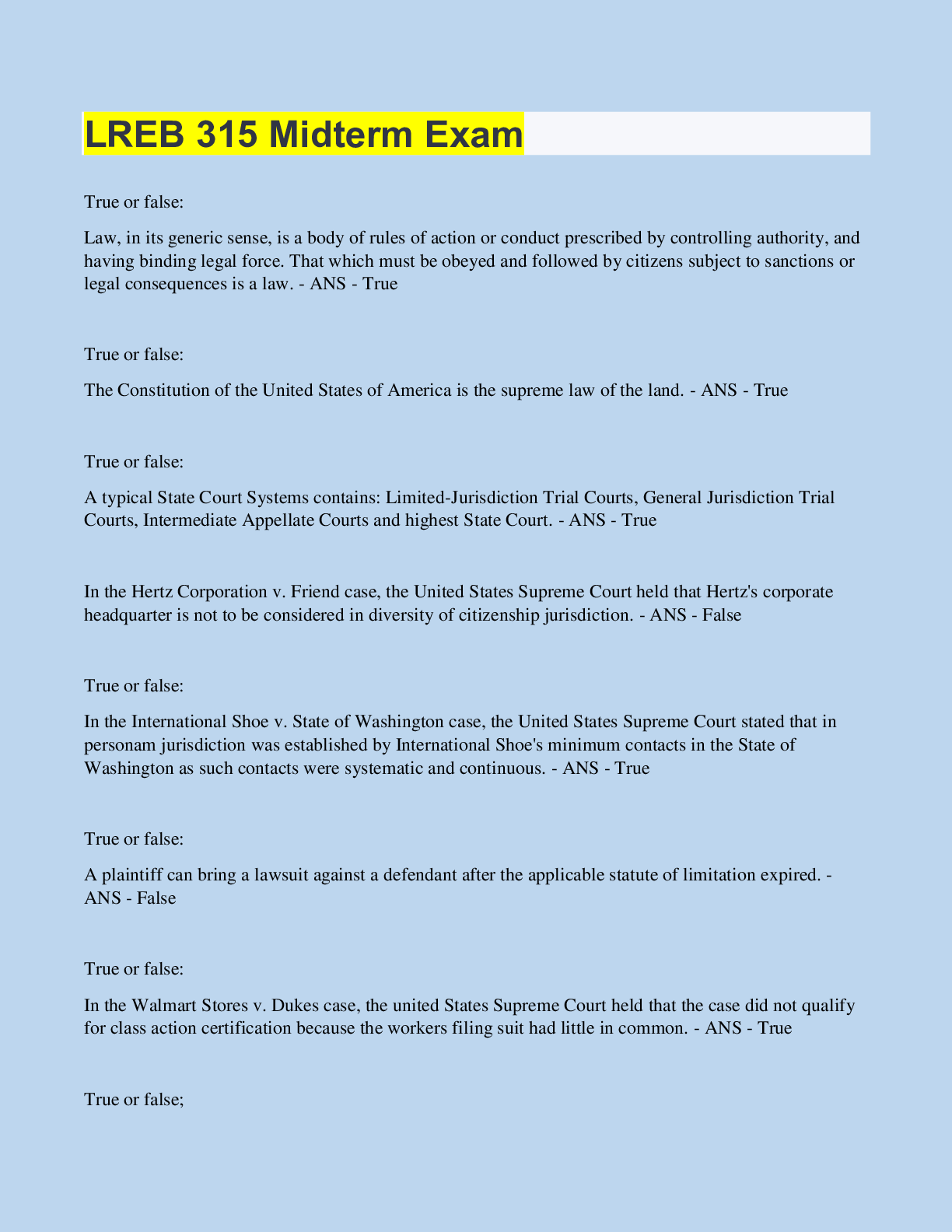Economics > QUESTIONS & ANSWERS > WGU C236 Compensation and Benefits Questions and Answers Already Graded A (All)
WGU C236 Compensation and Benefits Questions and Answers Already Graded A
Document Content and Description Below
WGU C236 Compensation and Benefits Questions and Answers Already Graded A Business Strategy ✔✔The collection of decision, approaches, and activities that allow an organization to complete and ... win. Cost Leadership Strategy ✔✔Focusing business priories on providing a lower-cost product or service. Differentiation Strategy ✔✔Providing innovative, exceptional, and high quality products and/or services to customers. Niche-Focused Strategy ✔✔Targeting business priorities toward addressing a specific section of the market Hybrid Strategy ✔✔Employing a combination of cost-leadership, differentiation and nichefocused business strategies. Critical Success Factors ✔✔Capabilities, activities, customer perceptions and market positions that allow an organization to out-compete its rivals. Total rewards strategy ✔✔The combination of pay forms, plans, policies and practices that enable long-term organizational performance. Total Reward Content Strategy ✔✔Specifies the type, level and combination of rewards offered to employees. Reward Form Combinations Strategy ✔✔The reward forms offered (cash, benefits, etc.) and the way in which they relate to each other. Reward Level Strategy ✔✔How much is being offered? Absolute level ✔✔The reward can be defined. Relative Level ✔✔States the rewards strategy as greater than, equal to, or less than some labor market reference point. Centralized approach ✔✔Human Resources makes all the decisions Decentralized approach ✔✔Decisions are made by the employee's immediate supervisor or manager. Job Analysis ✔✔The process of systematically analyzing positions that result in completed work in organizations. Traditional interview method ✔✔The job analyst asks the job incumbent preset questions about the content, skills needed and time spent on activities in the job. Panel Interview ✔✔Multiple job incumbents (and sometime multiple job analysts) all meet together to analyze the job. Custom Questionnaires ✔✔A series of questions that job incumbents complete on their own. Generic Questionnaire ✔✔Purchased from a third party and use general questions to which incumbents respond using scaled ratings. Occupational Information Network (O*NET) ✔✔Online database created by the US DOL that provides an exhaustive listing of jobs and occupations PayScale ✔✔Web site that hosts a continuous compensation and benefits survey that is based on data gathered from individuals who visit its site. Occupational Outlook Handbook ✔✔Searchable database provides more occupation-level information about jobs and work in organizations. Job Design ✔✔Process of systematically constructing jobs to make them functional, efficient and motivational. Job Title ✔✔The name by which the job is known within the company. Reference ID ✔✔A letter and/or numeric code used to reference the job, often in databases. Job Family ✔✔Grouping of jobs that have similar functions or content. Job specification ✔✔Translates the tasks, duties and responsibilities (TDR's) into the knowledge, skills, abilities and other (KSAO's) that an employee needs to perform the job at a satisfactory level. Job-based Approach ✔✔Internal reward alignment assumes that organizations provide rewards based upon the job that a person holds. Individual-based Approach ✔✔Rewards should be based upon the characteristics of the person holding a job. Performance-based Approach ✔✔Rewards should be based upon the performance or results produced by an employee. Job Evaluation ✔✔Process by which the value of each job is an organization is established. Job Structure ✔✔Organized listing of the business's jobs that functionally groups and hierarchically arranges the jobs for the rewards purpose. Job-value Structure ✔✔Represents the structure of jobs internally positioned according to their relative value. Answers the questions of what the jobs are, how they are related and the relative importance of each. Compensable factors ✔✔Job elements or criteria that identify what the organization values for purposes of job evaluation. Step one in the Point Factor Approach. Benchmark Jobs ✔✔Sample of jobs that is representative of the type, content and level of jobs in the organization. Rating Scales ✔✔Tools used to measure compensable factors in step two of the Point Factor Approach. Anchored Rating Scale ✔✔Use examples and/or definitions for each point value on the scale. Variable Distance Scale ✔✔Uses different point distances between each level in the scale. Factor Weighting ✔✔The process of deciding how important compensable factors are to the organization Face validity ✔✔The extent to which the system produces relative job values that appear to be accurate and creible. Labor-driven job Market ✔✔When the demand [Show More]
Last updated: 2 years ago
Preview 1 out of 9 pages
.png)
Buy this document to get the full access instantly
Instant Download Access after purchase
Buy NowInstant download
We Accept:

Also available in bundle (1)
.png)
WGU C236 BUNDLED EXAM QUESTIONS AND ANSWERS WITH COMPLETE AND VERIFIED SOLUTIONS; ALL GRADED A+
WGU C236 BUNDLED EXAM QUESTIONS AND ANSWERS WITH COMPLETE AND VERIFIED SOLUTIONS; ALL GRADED A+
By Nutmegs 2 years ago
$25
15
Reviews( 0 )
$10.00
Can't find what you want? Try our AI powered Search
Document information
Connected school, study & course
About the document
Uploaded On
Sep 03, 2022
Number of pages
9
Written in
Additional information
This document has been written for:
Uploaded
Sep 03, 2022
Downloads
0
Views
132

.png)


